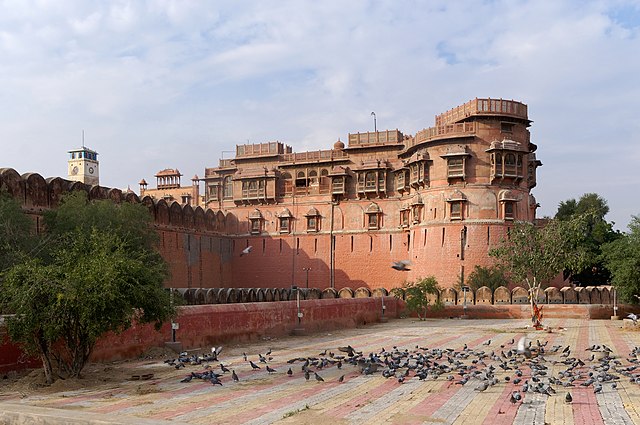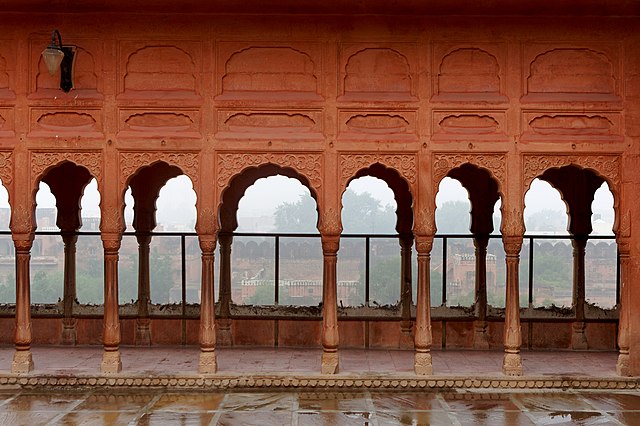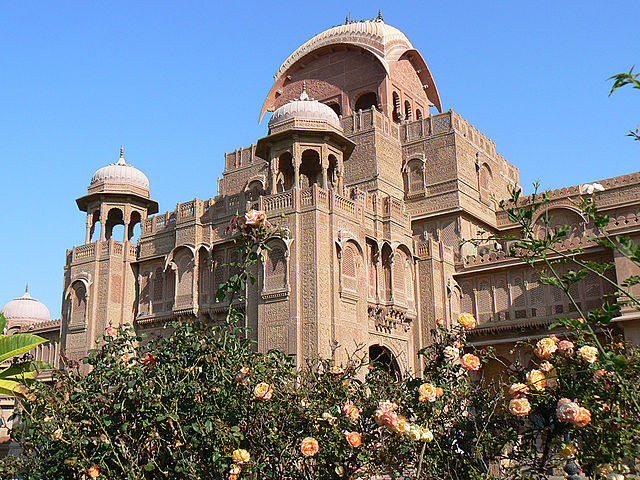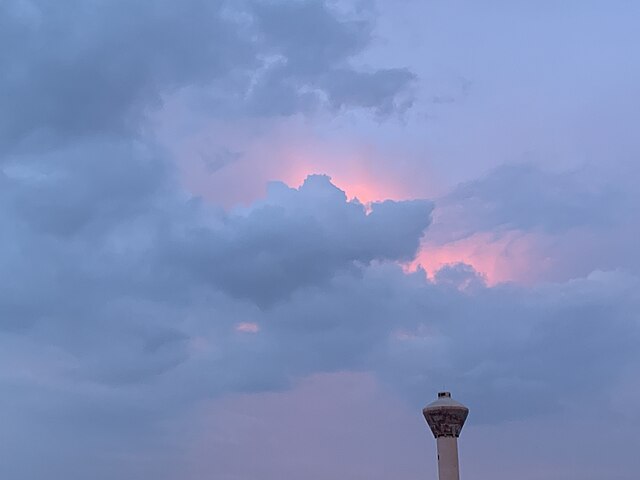Bikaner, a vibrant city in the heart of Rajasthan, India, is a land of golden sands, majestic forts, and a climate that’s as dynamic as its culture. If you’re planning a trip or just curious about what the weather’s like in this desert gem, you’re in for a ride! Bikaner’s weather is a fascinating mix of scorching summers, chilly winters, and a brief but refreshing monsoon. Let’s dive into the nitty-gritty of Bikaner’s climate, explore what makes it unique, and share tips to help you navigate its weather like a pro. Ready to unpack the secrets of Bikaner’s skies? Let’s get started!
Understanding Bikaner’s Desert Climate
Imagine a place where the sun reigns supreme, painting the landscape in hues of gold while the nights can surprise you with a chilly embrace. That’s Bikaner for you—a city nestled in the Thar Desert with a hot desert climate. The weather here is defined by extremes: blistering heat in summer, cool winters, and a fleeting monsoon that brings life to the arid land. The city sits at an elevation of about 225 meters above sea level, which influences its temperature swings and low humidity levels. If you’re wondering what to expect, think of Bikaner’s weather as a rollercoaster—thrilling, unpredictable, and full of surprises!
What Makes Bikaner’s Weather Unique?
Bikaner’s location in the Thar Desert shapes its climate like a sculptor chiseling a masterpiece. The lack of significant water bodies means there’s little moisture to moderate temperatures, leading to dramatic highs and lows. Daytime can feel like you’re walking on the sun’s surface, while nights might have you reaching for a shawl. Dust storms, known locally as “andhi,” can sweep through, adding a wild twist to the weather. This unique blend of arid conditions and seasonal shifts makes Bikaner’s climate a topic worth exploring.
Seasonal Breakdown of Bikaner Weather

Bikaner’s weather dances through three main seasons: summer, monsoon, and winter. Each has its own personality, offering different experiences for travelers and locals alike. Let’s break down what each season brings to the table, so you can plan your visit or daily routine with confidence.
Summer in Bikaner: A Fiery Affair
Summer in Bikaner, from March to June, is not for the faint-hearted. Temperatures often soar above 45°C (113°F), with peaks sometimes touching 47°C. It’s like stepping into an oven, with the sun blazing relentlessly. Humidity stays low, around 15-20%, which makes the heat feel dry but intense. Dust storms are common, especially in May and June, turning the sky into a hazy canvas. If you’re visiting during summer, think lightweight clothing, sunscreen, and plenty of water—hydration is your best friend!
Tips for Surviving Bikaner’s Summer Heat
Beating the summer heat in Bikaner is like preparing for a desert adventure. Stick to indoor activities during the day, like exploring the Junagarh Fort or savoring Bikaneri bhujia in a cool café. Wear loose, breathable fabrics like cotton, and don’t forget a wide-brimmed hat or scarf to shield yourself from the sun. Locals swear by lassi, a refreshing yogurt-based drink, to stay cool. And here’s a pro tip: plan outdoor activities for early mornings or late evenings when the heat takes a breather.
Monsoon in Bikaner: A Brief Respite
Come July, the monsoon arrives, offering a welcome break from the heat. Running through September, this season brings light to moderate rainfall, though Bikaner gets less rain compared to other parts of India—think of it as a gentle sprinkle rather than a downpour. Temperatures drop to a more manageable 30-35°C (86-95°F), and humidity rises to 50-60%. The desert blooms, and the air feels fresher, making it a great time to explore outdoor attractions like the Karni Mata Temple. However, occasional heavy showers can lead to muddy roads, so pack waterproof gear.
What to Expect During Bikaner’s Monsoon
The monsoon transforms Bikaner into a greener, livelier version of itself. You might catch sight of rare desert flora or enjoy the cooler evenings. But don’t expect a tropical rainforest vibe—this is still a desert! Rainfall is sporadic, with about 9 rainy days a month on average. Keep an umbrella handy, and check local weather updates, as sudden showers can catch you off guard. It’s also a fantastic time to photograph the city’s forts against dramatic, cloudy skies.
Winter in Bikaner: Cool and Crisp
Winter, from November to February, is Bikaner’s golden season. Temperatures range from 10°C to 25°C (50-77°F), with nights sometimes dipping to 5°C (41°F). It’s like a refreshing breeze after months of heat, making it the best time to visit. The skies are clear, and the days are sunny, perfect for sightseeing or camel safaris in the desert. Locals bundle up in shawls, and you’ll see bonfires lighting up the evenings. If you’re chasing pleasant weather, winter’s your ticket!
Why Winter is Bikaner’s Best Season
Winter in Bikaner is like a warm hug from a cool friend. The mild temperatures make it ideal for exploring attractions like the Lalgarh Palace or enjoying street food without breaking a sweat. Festivals like the Bikaner Camel Festival, often held in January, add a cultural flair to the season. Pack a light jacket for the evenings, and you’re set to soak in the city’s charm under clear, starry skies.
Current Weather in Bikaner: What’s Happening Now?
As of June 21, 2025, Bikaner is likely in the grip of pre-monsoon heat, with temperatures hovering around 42-45°C (108-113°F). Recent reports suggest partly cloudy skies with a chance of drizzle, offering slight relief from the heat. Humidity is low, around 6-15%, and winds can pick up, sometimes reaching 33 km/h. Dust storms might make an appearance, so keep an eye on local forecasts. If you’re in Bikaner now, stay hydrated and avoid midday outdoor activities. Curious about the latest updates? Check sites like AccuWeather or the India Meteorological Department for real-time data.
Air Quality in Bikaner: Breathing in the Desert
Bikaner’s air quality can be a mixed bag, especially during summer when dust storms kick up fine particles. The Air Quality Index (AQI) often hovers in the moderate range, but sensitive groups might feel discomfort during dusty days. Monsoon and winter typically bring cleaner air, thanks to rain and cooler temperatures. If you’re visiting, consider a mask during dust storms, especially if you have respiratory issues. Want to stay safe? Limit outdoor activities when air quality dips and keep windows closed during storms.
Planning Your Visit: Best Time to Go

Choosing the right time to visit Bikaner is like picking the perfect moment to dive into a pool—timing is everything! Winter (November to February) is hands-down the best season, with pleasant temperatures and vibrant festivals. Monsoon (July to September) is a good runner-up for those who don’t mind occasional rain and want fewer crowds. Summer (March to June) is best avoided unless you’re a heat enthusiast or sticking to indoor attractions. What’s your travel style? Let the weather guide your plans!
Packing Tips for Bikaner’s Weather
Packing for Bikaner is like preparing for a desert expedition with a twist of royalty. For summer, pack lightweight, breathable clothes, sunglasses, and a sturdy hat. Monsoon calls for waterproof shoes and a compact umbrella. In winter, layer up with a mix of light clothing for sunny days and a jacket for chilly nights. Don’t forget sunscreen year-round—Bikaner’s sun doesn’t mess around! A reusable water bottle is a must to stay hydrated, no matter the season.
How Weather Shapes Bikaner’s Culture and Lifestyle
Bikaner’s weather isn’t just a backdrop—it’s a character in the city’s story. The harsh summers have shaped a resilient culture, with locals mastering the art of staying cool through architecture, like the airy courtyards of havelis. Monsoons bring celebrations, with festivals and gatherings under cloudy skies. Winter sees the city come alive with outdoor events, from camel races to street markets. Ever wondered how a desert city thrives in such extremes? It’s all in the ingenuity of its people, from water conservation to seasonal cuisine like ghevar during monsoons.
Weather and Bikaner’s Famous Festivals
Bikaner’s festivals are like fireworks in the desert sky, and the weather plays a big role in their timing. The Bikaner Camel Festival in winter is a must-see, with camel parades and cultural shows under crisp, sunny skies. Monsoon brings smaller local celebrations, often tied to rain and harvest. Summer keeps things low-key, with indoor cultural events. Planning to catch a festival? Winter’s your best bet for a vibrant, weather-friendly experience.
Weather Challenges and How to Tackle Them
Bikaner’s weather can throw curveballs, from scorching heat to sudden dust storms. Summer’s high temperatures pose risks like dehydration or heatstroke, so always carry water and avoid strenuous activities during the day. Monsoon’s occasional heavy rain can make roads tricky, so check routes before heading out. Winter is generally hassle-free, but chilly nights might surprise unprepared travelers. The key? Stay informed, plan ahead, and embrace the adventure. What’s the worst weather surprise you’ve faced on a trip?
Using Technology to Stay Ahead of Bikaner’s Weather
In a city where weather can change like a desert mirage, technology is your ally. Apps like AccuWeather or Zoom Earth offer real-time updates on temperature, humidity, and precipitation. The India Meteorological Department’s website provides reliable forecasts, especially for heatwaves or storms. Want to go old-school? Chat with locals—they’re like walking weather apps, with years of experience reading Bikaner’s skies. Keep your phone charged and notifications on, and you’ll never be caught off guard.
Bikaner Weather and Outdoor Activities
Bikaner’s weather sets the stage for its outdoor adventures. Winter is perfect for camel safaris, exploring sand dunes, or visiting the Gajner Wildlife Sanctuary. Monsoon offers scenic drives to nearby lakes like Kolayat, with greenery in full bloom. Summer’s best for indoor gems like museums or the Rampuria Haveli, but if you’re braving the heat, early morning desert treks are magical. Whatever the season, Bikaner’s weather adds a unique flavor to every activity. Ready to plan your desert adventure?
Climate Change and Bikaner’s Future Weather

Like a sandcastle facing the tide, Bikaner’s weather is feeling the ripples of climate change. Rising temperatures and more intense heatwaves are becoming common, with summer highs pushing past historical norms. Monsoons are getting less predictable, with erratic rainfall patterns. Locals are adapting, from sustainable water practices to solar energy, but the future calls for more action. If you’re visiting, consider eco-friendly choices like staying in green hotels or supporting local conservation efforts. How can we all pitch in to keep Bikaner’s desert charm intact?
Conclusion: Embrace Bikaner’s Weather with Confidence
Bikaner’s weather is like a vibrant tapestry, woven with threads of heat, rain, and cool breezes. Whether you’re chasing winter’s mild days, monsoon’s refreshing showers, or summer’s fiery spirit, this desert city offers a climate as rich as its heritage. By understanding its seasons, packing smart, and staying updated, you can make the most of your time in Bikaner. So, grab your sunglasses, layer up for the nights, and dive into the adventure—Bikaner’s weather is ready to tell you its story. What’s stopping you from exploring this desert gem?
FAQs About Bikaner Weather
1. What is the best time to visit Bikaner?
The best time to visit Bikaner is during winter (November to February) when temperatures are mild, ranging from 10-25°C, making it ideal for sightseeing and outdoor activities.
2. How hot does it get in Bikaner during summer?
Summer in Bikaner (March to June) can see temperatures soar to 45-47°C (113-117°F), with low humidity and occasional dust storms. Staying hydrated is crucial!
3. Does Bikaner get a lot of rain during the monsoon?
Bikaner’s monsoon (July to September) brings light to moderate rainfall, averaging about 9 rainy days a month. It’s not heavy like coastal areas but enough to cool things down.
4. How should I prepare for Bikaner’s weather?
Pack lightweight clothes for summer, waterproof gear for monsoon, and layers for winter. Sunscreen, hats, and a reusable water bottle are must-haves year-round.
5. Are dust storms common in Bikaner?
Yes, dust storms, or “andhi,” are common in summer, especially in May and June. They can affect air quality, so consider a mask if you’re sensitive to dust.

